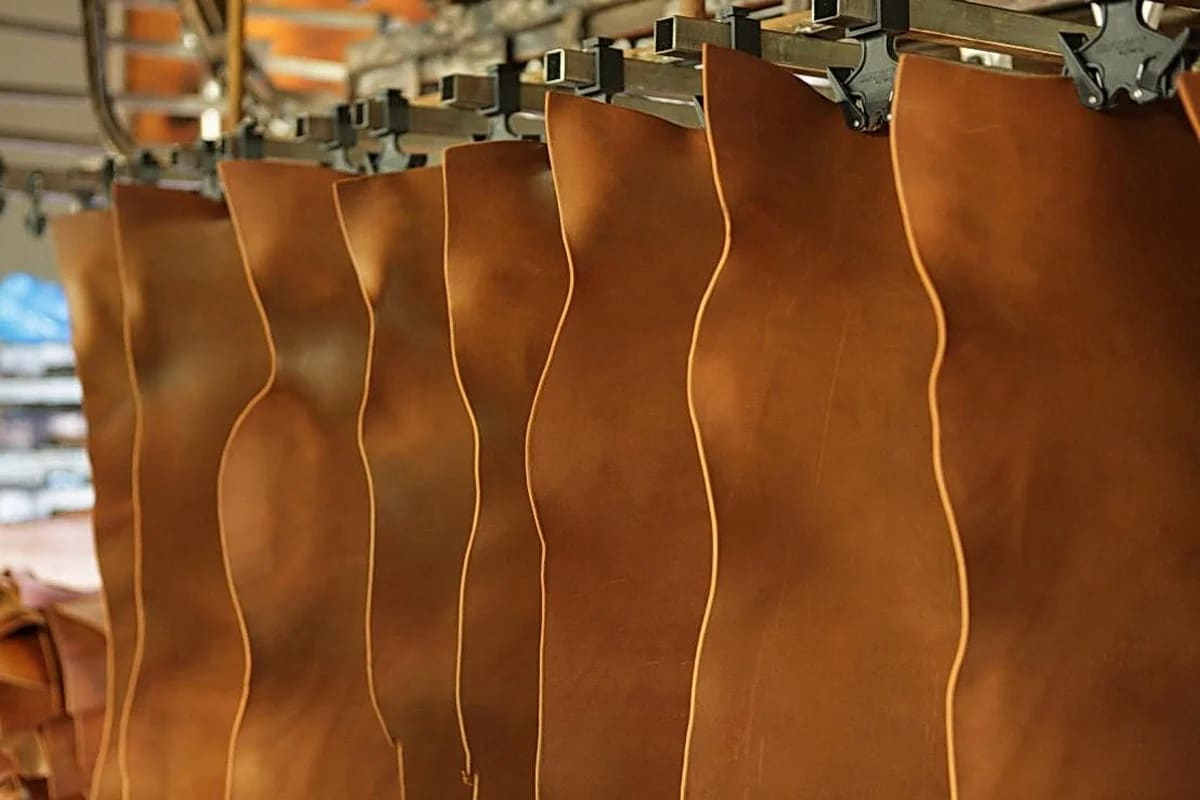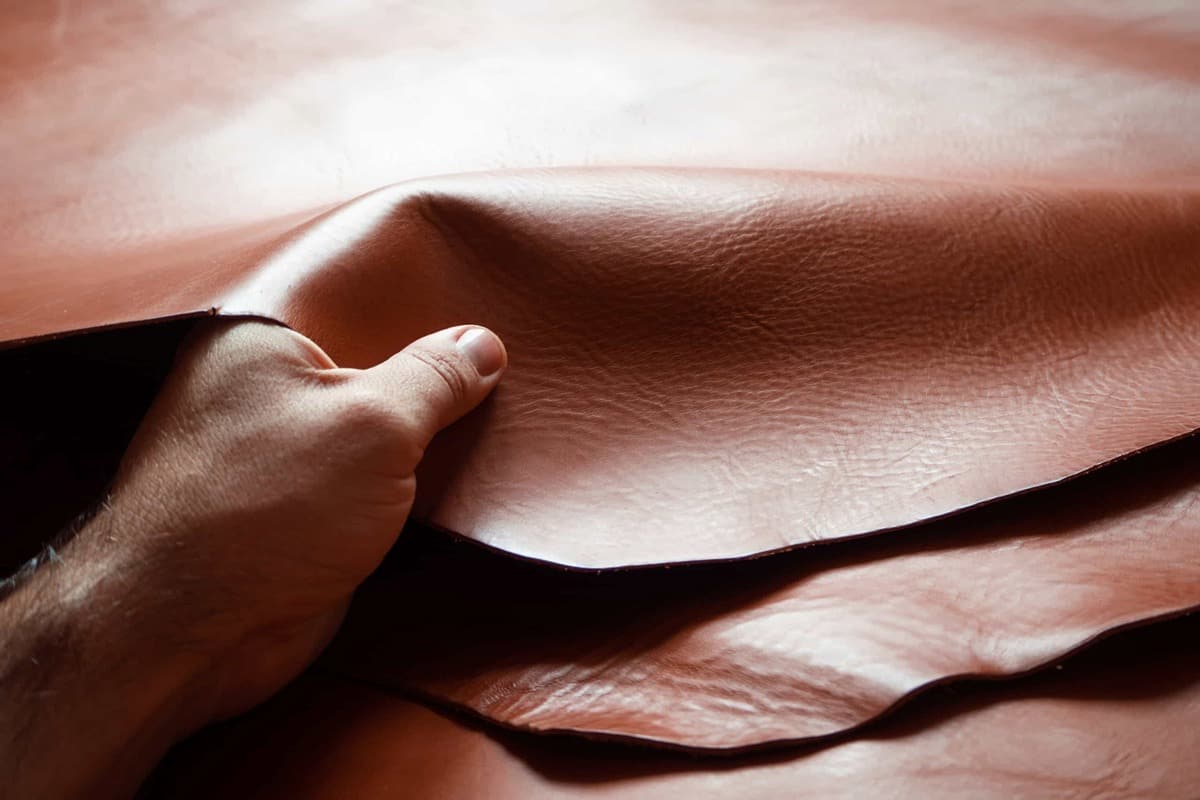Did you know that there are several different types and methods of tanned leather processing, each of which is tailored specifically to a particular use for the material The majority of people, when you mention the term "leather," immediately think of leather coats, leather handbags, or gorgeous seats inside of a nice automobile with a pleasant fragrance.? I hope that after reading this post, you will have a much better understanding of the various methods of tanning since I am going to offer you some instances of these methods. Tanning the leather is the first phase in the process of manufacturing leather. This step takes place after the hides have been thoroughly washed to remove any traces of blood, filth, salt, and hair. Hides and skins need to be treated before they can be used in the production of leather goods. The term for this kind of treatment is "tanning." The tanning process alters the chemical composition of the leather's fibers, making it more difficult for the enzymes produced by bacteria and fungus to degrade the material and so increasing the leather's longevity.

The earliest form of tanning is called tanning with vegetables. Tannins are used in the process of vegetable tanning. Tannins are naturally found in a wide variety of plant species and may be collected from wood, bark, roots, plants, tree nuts, and other environmentally friendly vegetable sources. It may take up to two months to tan the leather using this procedure, but the finished product is gorgeous leather that has a unique feel and appearance and that matures in a lovely way. The vegetable tanning process is more time-consuming than the chrome tanning process; nevertheless, it has the advantage of making use of natural, renewable, and sustainable sources of raw material. Vegetable Because tanned leather, also known as vegetable-tanned leather, is not particularly flexible, it is most often used for making accessories such as wallets, purses, belts, bags, and footwear, in addition to various types of apparel accessories. If you are searching for a leather product that will last the longest and stand the test of time, then you should opt for one that is made of vegetable-tanned leather. Because it is crafted from natural components, such as tree bark, it has a longer lifespan than leathers that are chrome or oil tanned.

Vegetable-tanned leathers are also more costly owing to the fact that it takes a lot longer to create them and that they employ more natural resources, but they are well worth every cent if you are seeking for something of excellent quality and stunning beauty. Because of the absence of chemicals in the manufacturing process of this sort of leather, it is without a doubt your best option if being kind to the environment is a priority of yours in addition to seeking excellence. Leather that has been vegetable-tanned is superior to other kinds of leather in terms of its pliability and longevity. This not only makes it simpler to work with and less likely to break while you are working with it, but it also allows for better shoe bottoms since the soles may bend as much or as little as you need them to while still returning to their original form. Veg-tanned leather is also more resistant to water and moisture than other varieties of leather, which makes it ideal for manufacturing items such as jackets or wallets that will get wet on a regular basis. Veg-tanned leather may be found in many different colors (think raincoats). It is also more resistant to heat than the majority of other types of leather, which means that if you're looking for something that may endure in harsh circumstances for lengthy periods of time, vegetable-tanned leather could be your best pick! Lastly, since vegetable-tanned leather is inherently more resistant to scratches than other forms of leather, it has a longer lifespan than most other types of leather. If something sharp were to get onto the surface of a veg tan item, then there would be no damage done due to its greater flexibility in comparison to those made from stiffer hides like cowhide or horsehide;

this makes them ideal tools when working with tools such as knives or needles during crafts projects because they will stand up well over time without cracking easily due to their resistance to drying out. Chrome-tanned: Leather that has been chrome-tanned is by far the most common variety used today. It also has the longest shelf life, which contributes to its low cost, as well as the lowest production cost overall. Due to a chemical coating that resists absorption, this sort of leather does not absorb water or other liquids when it comes into touch with them; rather, it repels them. This makes chrome-tanned leather less vulnerable to harm from moisture than other kinds of leather products—especially when compared to vegetable-tanned leather, which absorbs moisture quickly and may become brittle over time if not cared for correctly. Leather that has been chrome-tanned is toxic to the surrounding ecosystem. It is not capable of decomposing naturally, and its production requires a great deal of water, chemicals, and power. Chrome tanning is a procedure that treats animal skins with chromium sulfate to make them seem glossy and waterproof. This process gives the skins a metallic sheen. Before the leather can be utilized in items such as bags or shoes after undergoing this chemical treatment, the drying process may take as long as eight months. Chrome tanning has been connected to cancer in humans because it releases carcinogens into the area surrounding when it is used during the production process; some countries have completely banned it because they believe that its use puts too much pressure on natural resources like the water pollution levels.

Mineral tanning, which is also known as chrome tanning, is an industrial process of tanning that was developed in the late 1800s for use with contemporary technology and high volumes of manufacturing. During the tanning process, plant tannins are replaced with mineral salts (chemicals and metals) such as chromium and mercury, and shelf-stable oils are reintroduced in order to maintain the leather's pliability and suppleness. The mineral-tanning process may be completed in as little as one day, which may be one of the reasons why chrome tanning accounts for 90 percent of all leather produced today. Because the original color of the leather is removed during the tanning process, the final product is supple and has the drape of fabric. Additionally, this kind of leather may be dyed to any color imaginable (called wet blues). The most common applications for this kind of leather are in the shoe and fashion sectors. The shorter amount of time required to prepare it results in a lower overall cost than that of leather that has been vegetable-tanned. If you want to see our factory and the process of tanning the leather, you have this opportunity to visit all the processes in person. Just fill out the form and let us know, there would be an opportunity for you to be invited and visit the process of making our leather products.
